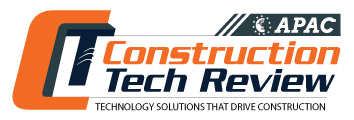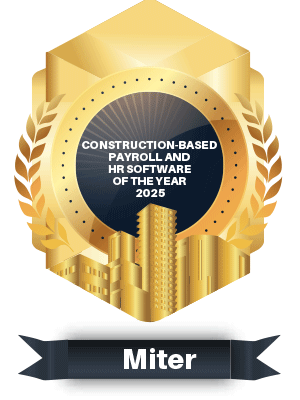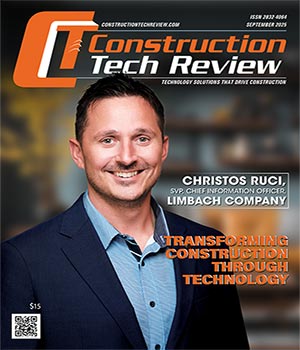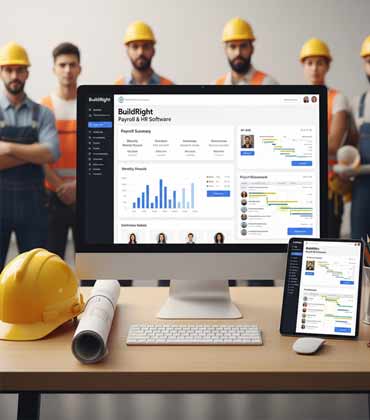THANK YOU FOR SUBSCRIBING
Christos Ruci is an experienced business and technology executive serving as Limbach’s CIO, while also accountable for the functions typically assigned to a CTO and CISO. He leads strategic initiatives in cybersecurity, digital solutions, and data-driven services, transforming IT from support to a growth engine. As an Orbie- award-winning CIO and with over 20 years in IT, sales, and operations across industries, Christos drives innovation and operational excellence. As Chair of Florida CIO, he champions IT leadership and collaboration, fostering innovation and mentorship across the technology community. Through this article, Ruci emphasizes leveraging emerging technologies, robust cybersecurity measures, and data-driven strategies to optimize construction processes and drive industry innovation. My professional background spans internal IT operations, software development, and operational leadership within the industry, as well as experience with professional services focused o
Construction-Based Payroll and HR Software of the Year 2025
Construction runs on precise coordination. From managing crews across multiple sites to sequencing equipment, materials and subcontractors, contractors routinely orchestrate thousands of moving parts to build everything from railways and bridges to skyscrapers and data centers. Yet the systems behind the scenes, especially HR and payroll, lag far behind, never built to handle the equally intricate demands of managing, developing and paying a construction workforce. This is the gap Miter was built to close. Rather than forcing contractors to choose between generic HR tools or legacy ERPs not suited to the realities of construction, Miter reimagines the entire workflow from the ground up. It’s a cloud-based platform designed specifically for the industry’s nuances, bringing time tracking, payroll, compliance, benefits and job costing into a single, connected system. Crews clock in with Miter’s app. Hours sync to payroll where pay rates are applied based on job, classification and other dimensions. Certified payroll reports are generated with a click. Onboarding paperwork, certifications and approvals are completed, stored and accessible from anywhere. For field and office teams, what once required toggling between three or more systems now flows through one. Integration with leading ERPs is central to Miter’s ability to give contractors clear, real-time visibility into job costs and profitability. Labor hours, pay rates and expenses flow directly into systems like Sage, NetSuite, Acumatica and QuickBooks, producing accurate, fully burdened job costs without manual entry. With cost codes, payroll and financial records updating instantly, decision-makers have the insights they need to control costs, protect margins and run more profitable projects. For contractors, this translates into both significant time savings and improved accuracy—no more duplicate, manual data entry, no more wrangling reports in Excel, no more manually keying in time and no more reconciling errors and discrepancies. The time saved and errors avoided mean smoother operations and more bandwidth for the team to focus on the work that truly matters. Were on a mission to empower the next generation of contractors to build with confidence. That begins with removing the friction from back-office operations -- streamlining payroll, compliance and HR so teams can focus on what they do best: building the future,” says Connor Watumull, co-founder and CEO. The impact is best captured in the words of Miter’s customers. “We were doing things the same way since my dad started the company in the ’90s. We used to have physical folders for every employee, onboarding paperwork, licenses and anything important. Now, those folders live in Miter, which has allowed us to really build out an HR department,” says Stephanie Gill Steele, VP of finance and HR at McCusker-Gill..
Top Air Handling Solutions Provider 2025
Air handling units play a critical role in regulating air quality, temperature and humidity across office complexes and industrial plants. From healthcare facilities that require pristine air quality to sprawling corporate complexes striving for climate control precision, custom units breathe life into constrained areas with cutting-edge technology. AC Corporation has been synonymous with delivering top-notch air handling units tailored to industrial sectors and enhancing air quality across manufacturing facilities. A member of the Crete United family, AC Corporation specializes in made-to-order units that last for decades. “Our creative know-how allows us to build durable units that last for generations and fit exactly with what clients want,” says Tim Boyles, director of sales at AC Corporation. Delivering top-of-the-line air handling units for over half a century has been made possible by its robust manufacturing facility for fabrication of different custom products. Akin to a Swiss Army knife, the company offers services spanning HVAC, plumbing, mechanical, electrical, piping work, network cabling, security systems, access control and building automation. From the initial design phase to the final delivery, AC Corporation collaborates with clients, ensuring that every specification is met. Unlike off-the-shelf solutions, its custom units are engineered to perfection, offering owners unparalleled performance and durability. Flexibility in design enables the company to integrate any components required by the client and avoid limitations imposed by original equipment manufacturer contracts. The company’s versatility is best highlighted in an instance where a hospital built in the 1960s had multiple air handlers in their mechanical room that were past their prime and needed replacement. Full-size replacements for these large units were not possible because of the lack of a proper rigging facility. AC Corporation devised a stick-built unit by bringing in pieces onsite to overcome the rigging limitations and constructed the unit. The client had two existing units that were cross-connected to feed all the spaces before a new unit was constructed. It minimized downtime by getting one unit online as soon as it was ready and building the second unit later.
CXO INSIGHTS

Virtual Design & Construction Capabilities
Stephen Lester, Virtual Design & Construction Manager (East), Robert Bird Group

Maximizing Efficiency in Construction Projects through BIM
Justin Brooks, Design Technology Manager, Civil & Environmental Consultants

The Four Pillars of Safety
Jeff Aaker, Regional Safety Manager, TopBuild

Navigating Global Disruptions and Enhancing Construction Project Delivery
Ben McCafferty, Project Manager, Shook Construction

Leveraging Technology to Streamline Construction Processes
Jimmy Kaphusman, Project Director, M. B. Kahn

Driving Digital Innovation in Architecture and Engineering
Michael Warren, Digital Growth Lead, AECOM

Redefining Project Management with Connected Construction Tech
Shanthi Rajan, CEO and Founder, Linarc
IN FOCUS
EDITORIAL
Payroll and HR Tools Leading the Way
The construction industry often finds itself facing unprecedented challenges that demand bold adaptation. Labor shortages, rising project complexity, and increasing regulatory requirements are now creating an environment where efficiency and accuracy are more critical than ever. Contractors must also navigate these hurdles while managing multiple job sites, diverse crews, and fluctuating material costs. Despite advances in many areas of construction technology, back-office operations such as payroll and HR often lag behind, relying on outdated or generic systems that do not fully address the industry’s unique demands. Against this backdrop, construction-based payroll and HR software solutions have become indispensable tools. Recent innovations in this space bring together core HR functions—such as recruitment, onboarding, time tracking, benefits administration, and training—into a single, connected platform. By leveraging mobile technology, workers clock in on-site with real-time data syncing to payroll systems that automatically apply job-specific pay rates and classifications. Automated compliance reporting reduces errors and simplifies audits, while centralized document management keeps certification and safety records easily accessible. This level of integration frees contractors’ administrative staff to focus on strategic priorities rather than routine data entry and reconciliation. Moreover, these modern tools improve workforce engagement by expediting hiring processes through AI-powered job postings and simplifying employee onboarding via mobile applications. Digitized benefits enrollment and learning management systems support employee development and retention, which are critical in a competitive labor market. The transparency gained through real-time labor cost tracking and analytics empowers contractors to make more informed decisions that protect margins and enhance project profitability. As construction demands continue to evolve, the adoption of tailored payroll and HR software is not just an operational upgrade; it is a strategic imperative. These technologies support the foundation upon which contractors build success—an efficient, compliant, and well-managed workforce ready to meet the challenges of today’s complex construction environment.

 Copyright © 2025 All Rights Reserved | by:
Copyright © 2025 All Rights Reserved | by: Construction Tech Review
| Subscribe | About us | Sitemap| Editorial Policy| Feedback Policy










